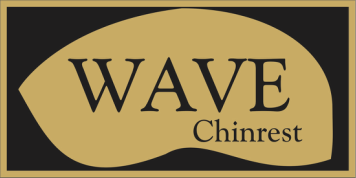How it works.
When we play, we want to keep the head in its balance point atop the neck vertebrae. With this, the supporting muscles can remain relaxed.
If the head is out of position, these muscles must tighten in order to hold the head in its position.
Some of these same muscles also move the arms. The ensuing tug-of-war between these two groups can result in pain, damage, and restricted range of motion.
Now, the lower bouts of the instrument form an arc going in one direction. The player's neck forms an arc going in the opposite direction, with one point of contact in between.
The line of the chinrest follows the arc of the
instrument-
instrument-
taking it AWAY from the chin. This means that if the player truly balances their head,
only the tip of the chin actually reaches the chinrest,
forcing the player to crane their neck over to the left in order to balance the instrument.
What if-
instead of forcing the chin over to reach the chinrest,
What if-
instead of forcing the chin over to reach the chinrest,
the chinrest came back to meet the chin?
instead of the chinrest cutting the jaw,
the chinrest ran back along the line of the jaw,
supporting it?
supporting it?
Then-
all one would have to do would be to simply spin one's head (either a little or a lot, depending on one's structure) and
all one would have to do would be to simply spin one's head (either a little or a lot, depending on one's structure) and
the chin would meet the chinrest all along the line of the jaw,
and the head could maintain its natural balance, allowing for proper spinal alignment, full range of arm motion, and decreased pain and damage.
